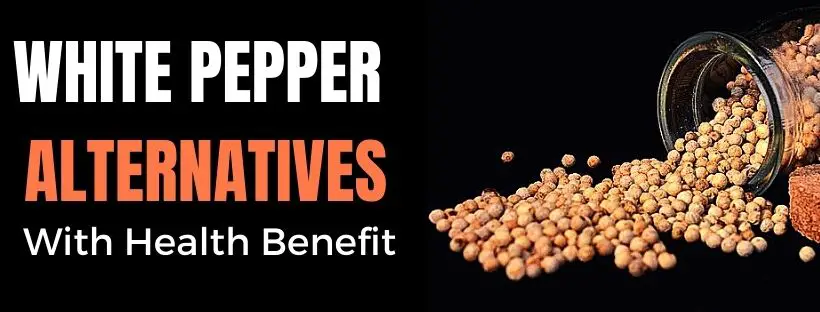
White pepper is more popular around French and Chinese cuisines.
The French love that peppery goodness in their creamy salads and sauces. It’s best used to add a subtle touch of spice to your white pasta, or to add a nice bite to your creamy white soup, or simply as a condiment for when you’re having pizza for dinner.

You get the distinctive flavor you want with white pepper, but with a less pungent feel to it than its black category. It is essentially a milder spice relative to black pepper, plus you don’t have to deal with the black specks you get with the latter.
Although processed from the same berry as black and green pepper, white pepper goes through a fermentation procedure that changes everything. It gives way to a change in how the spice functions.
Hence, you’re always aware it’s a peppery heat in your food but the kind that doesn’t linger in your nostrils too long. But be careful, peppercorns breathe identity, and too much white pepper will overtake and consume the rest of the flavors in your food in no time!
Health Benefits of White Pepper: At a Glance
- Great for stimulating tastebuds and bringing back an appetite to eat
- An efficient anti-inflammatory agent for bowel issues like constipation and boosting metabolism
- Makes up for a fresh breath
- Boosts the immune system
- Cleanses the body of toxins and chemicals and promotes healthy blood circulation
- Helps tackle heart diseases early on
What do experts say about the health benefits of white pepper?
“White pepper helps in preventing cancer by preventing formation of free radicals. It also aids in weight loss due to the presence of capsaicin, that burns fat in the body.” – Monisha, a Delhi-based Nutritionist
Peppery Business
If it’s white pepper you’re looking to substitute, why not go for an entire peppery course? We have black pepper, green pepper, and of course pink pepper.
The formers belonging to the same family tree (Piper Nigrum), and the latter boasting an unnoticeable similarity with the Piper berries. But to put things frankly, all three colors are really ‘levels’ to the spice you want to add to your recipe. Let’s break it down.
Black Pepper: Heat Level Max
- Black peppercorns come from the same plant that gives us the white kind
- They are the same berries but go through a different processing
- Black peppercorns retain their skin during the drying stage; white peppercorns do not
- Black peppercorns have numerous properties that white peppercorns do not, and because of this, they are hotter, have a more robust flavor, and a distinct aroma.
- White pepper has a milder and more earthy flavor in comparison.
- Black pepper is more commonly used in colorful, mouth-watering dishes for its bold flavor and overpowering scent.
- Therefore, keeping the differences in mind, use half a teaspoon of black pepper for every teaspoon of white pepper
- Black pepper offers numerous health benefits, including boosting metabolism, fighting heart and liver diseases, improving digestion, aiding weight loss, etc.
